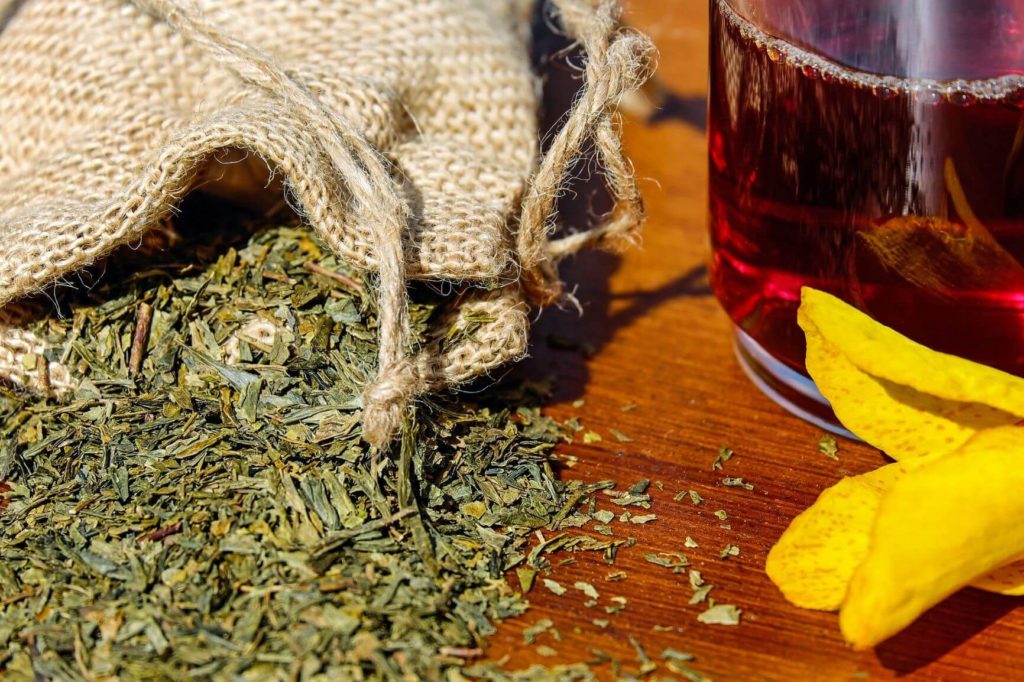Have you ever walked out your door, walked to your blueberry bush, and grabbed a handful of berries to make the best ever pancakes? It makes the 🥞 pancakes 🥞 so much better and you can nibble a few on the way back to the house.
Did you know you can do the same for your herbal teas? You can walk right out your door, into your herb garden, pick a few herbs, and steep your morning tea. You can grow your own herbs to make your special blend of teas that you can enjoy year-round. Just like with your fruit trees and bushes, you can store herbs to use all year-round.
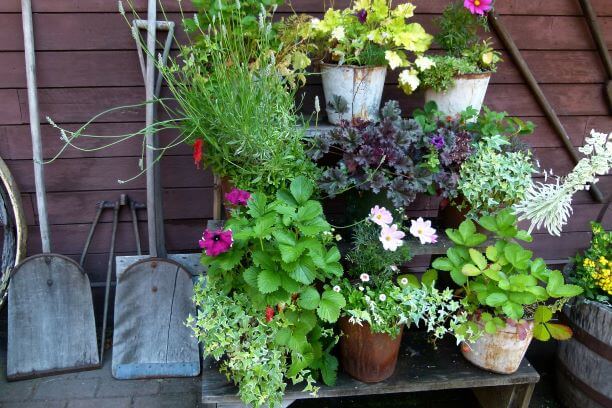
What is a Tea Herbal Garden?
A Tea Herbal Garden is a garden you have specifically for your tea. Of course, you can use the herbs in other culinary dishes, but the main purpose is for your tea enjoyment. Herbs like Peppermint and Chamomile aid in digestive issues and having these herbs on hand and ready for the teapot is better than having to remember to pick up Peppermint tea from the store or wait for it to ship.
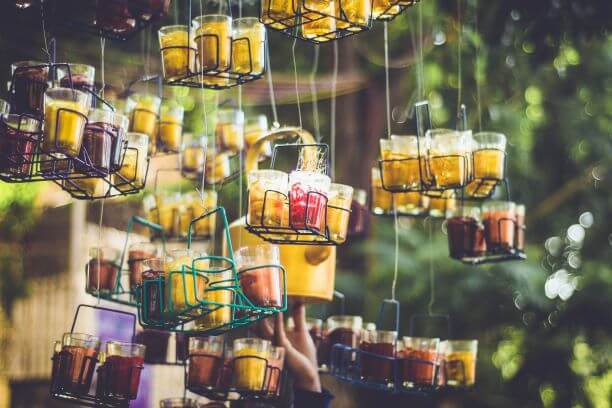
What Herbs should I grow in my Tea Herbal Garden?
When you think of your favorite herbal teas, which ones come to mind? Do you enjoy you tea with a little passionflower or lavender tea? How about the many benefits of Echinacea tea for immune boosting?
When you think about the teas you enjoy, you can start from there on what to grow in your herb garden. This is what makes your Tea Garden unique to you and your family.
This year I started my Tea Herbal Garden really small, with the Peppermint plant I already had. This coming year, I am going to expand my Tea Herbal Garden a bit, with Lemongrass, Lavender, and Ginger. We use a lot of ginger and lavender in other dishes, so this will be an added benefit to what we already have planted.
What have you already planted or planning to plant, that you can also use as part of your Tea Herbal Garden? Do you plant Lemongrass around your garden to ward off mosquitoes? Go ahead and harvest some for your teas.

Harvesting and Storing your Tea Herbs
Now that you have them planted and they are growing, what are you going to do with this bounty? You are going to harvest and dry your tea herbs. You can use them fresh from the garden, but you will want to dry some of them to use later in the year.
Harvesting your Tea Herbs
You will want to harvest your herbs as needed. You don’t want your herbs to take over your garden, so you harvest them to keep them under control. Depending on the herbs you have planted, that will determine how and when to harvest them.
Peppermint You harvest the leaves when they are full grown. You don’t want to pick the little leaves, let them grow a bit longer.
Chamomile You harvest the flowers as soon as they bloom. Make sure the flowers are fully open and the morning dew is off them.
Lavender You harvest when the flowers have bloomed about 40% – 50% of the stem. If you harvest in the early spring or summer, you may get a second harvest off Lavender.
Storing Your Tea Herbs
My blog from July 2020 Quick and Easy Ways for Storing your Garden Herbs, gives you tips on how to store them for use during the month, but if you want them to last until next season, you will need to dry them and store them properly.
There are several ways you can dry your Tea Herbs; Air Drying, Dehydrating, and Oven Drying.
Air Drying is the oldest of these methods. I am sure we have all seen period movies where the kitchen has strings along the rafters with lavender or rosemary hanging upside down. This is Air Drying. This method takes space and about a week or so to complete the drying process. If you are like me, you don’t have the space to hang a bunch of herbs from the rafters for a week. Plus, the humidity in the South would make this process take longer.
Dehydrating is another great method. If you have a dehydrator, you can use this method. You will need to make sure you clean your herbs. You dehydrate them on the lowest setting, in a mesh insert, and it takes a few hours to complete the process.
Oven Drying is the quickest of the drying methods. It only takes about 30 minutes or so to dry the herbs, depending on your oven. You will want to make sure you have the oven on the lowest setting you have. Place your herbs on a silicone mat or parchment paper so they don’t stick to the baking sheet.
No matter the method of drying you choose, test the herbs by crumbing them in your hand. If they crumble, they are ready to be storing. If not, they need to dry a little longer.
You will place your dried herbs in clean, sealable containers with labels. Once they are dried, many herbs look the same. Make sure you have clearly labeled your dried herbs. I like to upcycle my old herb bottles for my new herbs. You can also purchase glass bottles with tight sealed lids or use other canning jars for your herbs.
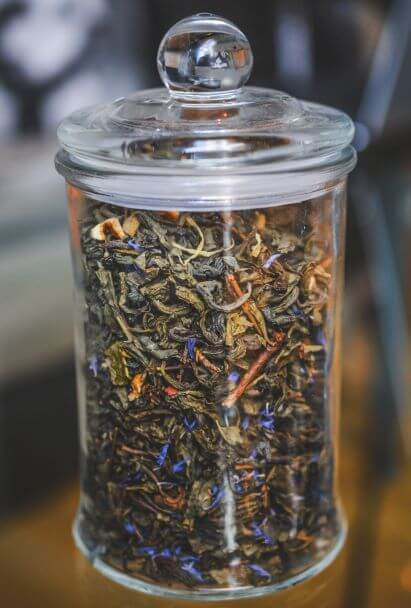
Using your Dried Tea Herbs in your Tea
Using your dried tea herbs for your tea is no different than using other dried herbs. Some things you can do ahead of time is mixed your loose tea with your herbs to make your special blend, that way you don’t have to mix them every time you want cup of tea.
Making your unique tea blend of herbs can be simple, but it is all about your taste and flavors. If you are using two herbs, you mix 1 part of the primary herb to ½ part of the secondary herb. For instance, 1 part lavender, and ½ part mint for a lavender mint tea. If the lavender is too strong, you can add more mint to the mixture.
Depending on your storage container, you can mix a few different herbs together, again, making the blend suited to your desired taste. If you are blending three herbs, you would do ½ part primary herb, ¼ part secondary and third herbs.
Make the combinations that fit your family and tea desires. The combinations will be unique to you and your Tea Herb Garden.
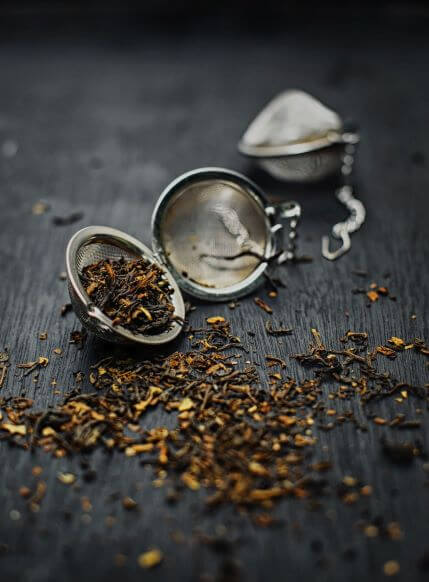
If you are looking for more great teas to enjoy, check out my e-booklet, 5 Herbal Teas to Make Your Day Better. In my e-booklet, we will take a look at five other herbal teas and the many benefits of them; Ginseng, Turmeric, Ginger, Chamomile, and Lemon Balm.
Let me know in the comments your favorite tea herb(s) you are using or going to try next planting season! 😁
